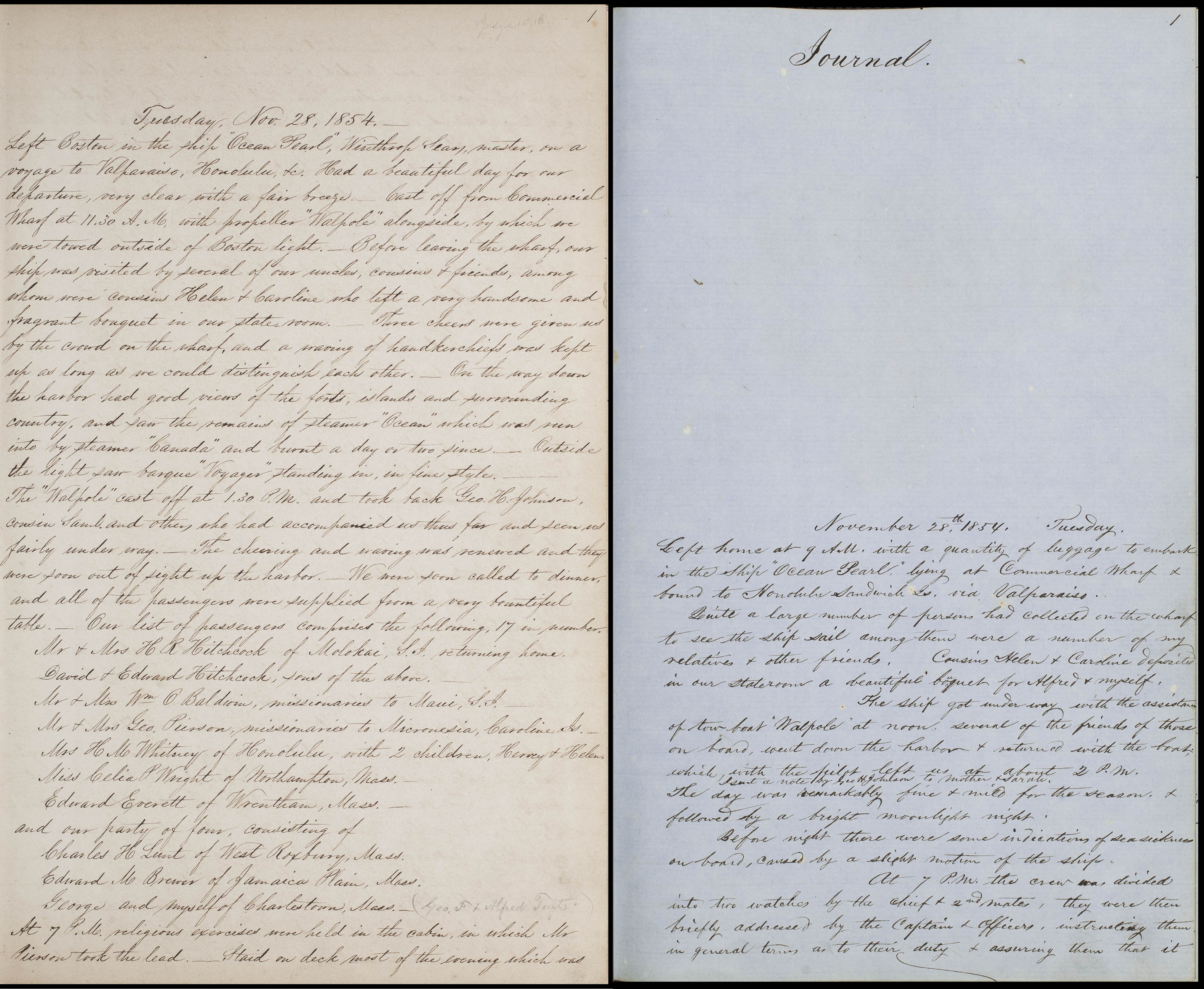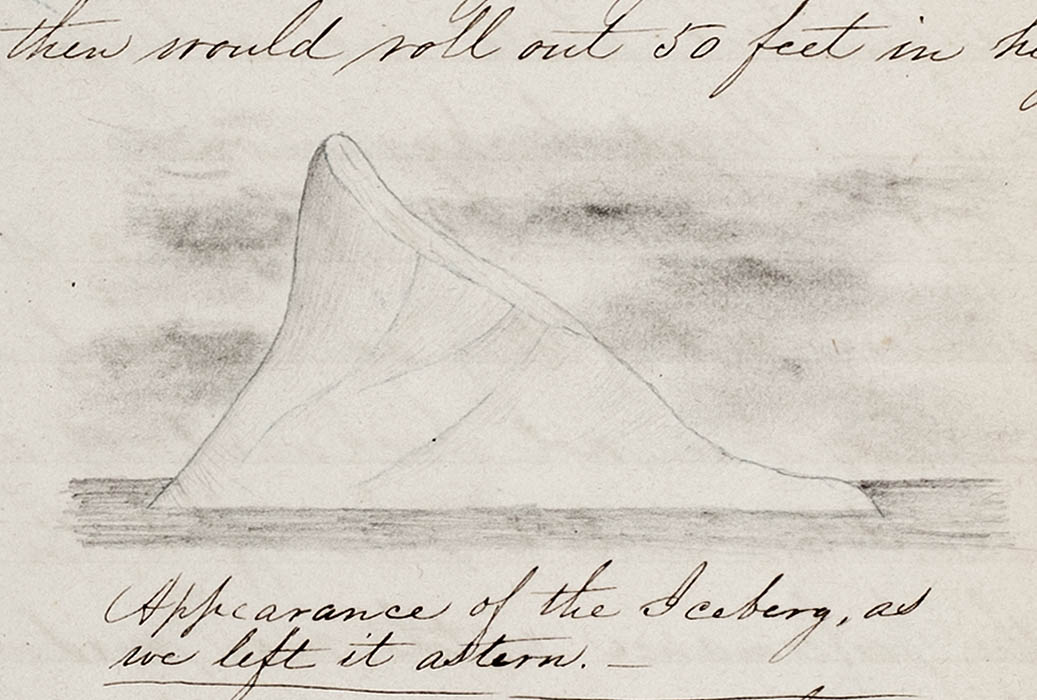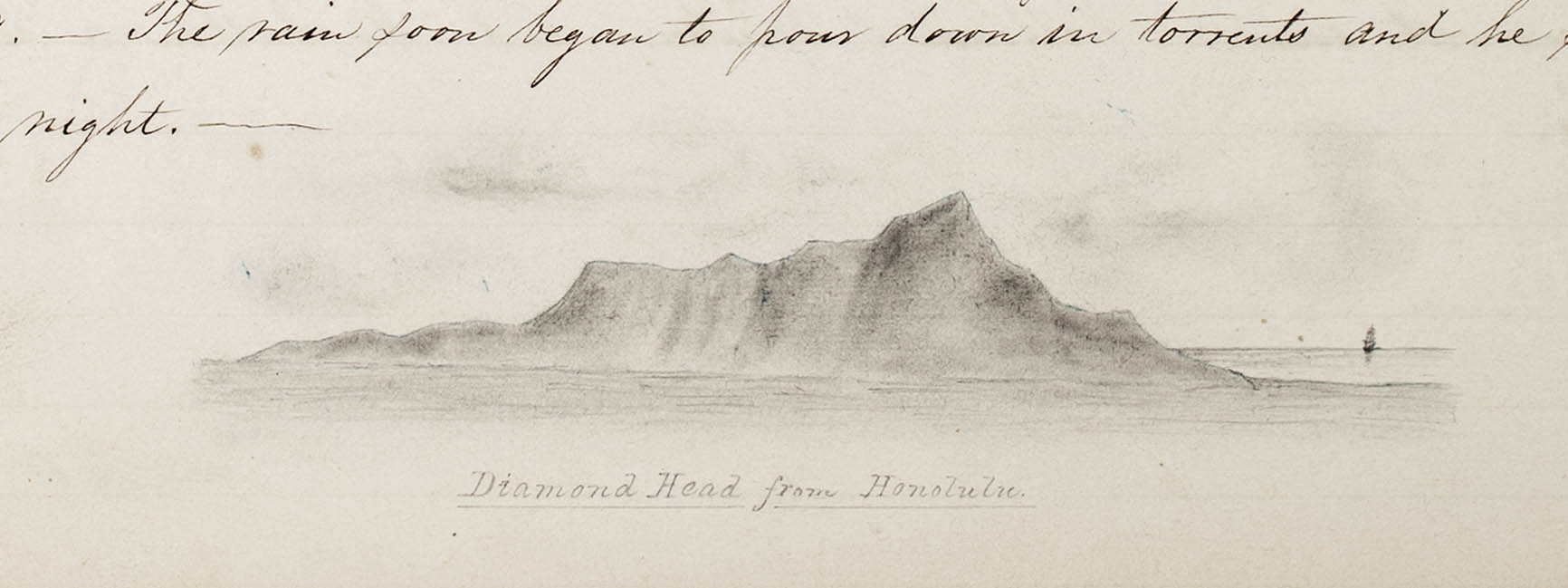By Susan Martin, Processing Archivist & EAD Coordinator
My work as a processing archivist here at the Massachusetts Historical Society involves not only cataloging new manuscript collections, but also improving descriptions and access for collections that have been sitting on our shelves for some time. Case in point: the Tufts family papers, which was recently brought to my attention by Laura Wulf, the MHS’s photographic and digital imaging specialist. While working on digital images from that collection, she noticed an oversight in our online catalog ABIGAIL.
The collection consists of correspondence, diaries, logbooks, and other papers of the notable Tufts family of Charlestown, Mass. Included are two logbooks dating from the mid-1850s, kept by brothers George and Alfred Tufts. Normally, logbooks that are part of a larger collection are individually cataloged to allow for more detailed subject access. As Laura discovered, Alfred’s had been cataloged, but George’s was nowhere to be found.
 The oversight was understandable—the brothers were actually traveling together on the same ship, the Ocean Pearl, and it’s pretty easy to make a mistake about who kept which volume if you don’t have time to examine them closely. But George deserved his due, and I was sorry to see him overshadowed by his younger brother like that! So the first thing I did was create a new, separate catalog record for his log.
The oversight was understandable—the brothers were actually traveling together on the same ship, the Ocean Pearl, and it’s pretty easy to make a mistake about who kept which volume if you don’t have time to examine them closely. But George deserved his due, and I was sorry to see him overshadowed by his younger brother like that! So the first thing I did was create a new, separate catalog record for his log.
I enjoy doing this kind of clean-up, not only because it makes our catalog more useful and our collections more discoverable for researchers, but also because it gives me the opportunity to add more detail to ABIGAIL and to familiarize myself with our older collections. The Tufts family papers were donated to the MHS back in 1962, and I don’t think I’ve ever had reason to look at them before. It’s a really fun and interesting collection.
In their logbooks, George and Alfred kept the usual navigational records—longitude, latitude, wind, course, temperature, etc.—but they didn’t stop there. The logs are also journals, fleshed out with long-form descriptions of daily life on a ship, including who got seasick (George), who lost his hat overboard (Alfred), who got drenched (pretty much everybody at some point), what Mr. and Mrs. Baldwin were arguing about (the window shutter), and what was really going on between Capt. Sears and Mrs. Whitney (who knows?). The two volumes complement each other; the brothers recount the same events, often in very similar language, although Alfred’s entries tend to be longer. Both logs also contain sketches of icebergs, islands, and other sights.



The Ocean Pearl sailed from Boston on 28 November 1854, around Cape Horn at the southern tip of South America, and landed at Honolulu, Hawaii. There, it turns out, the brothers split up—Alfred continued on the Ocean Pearl to the Far East, but George stayed in Hawaii for six months, where he wrote terrific descriptions of the islands’ natural and cultural wonders. On 26 September 1855, George embarked for San Francisco, overlapping with the tail end of the California Gold Rush, then sailed across the Pacific to Hong Kong and other points in Asia. Adding insult to injury, these voyages had been mistakenly attributed to Alfred, too!
After straightening out the catalog records for both logbooks, I noticed the collection contained another journal kept by George in 1850. On closer inspection, I found it described a trip up the Mississippi and Ohio Rivers via steamboat, so I added some detail to that catalog record, as well. Like the logbooks, there’s a lot more to this volume than meets the eye. For example, here’s one of George’s entries from June of that year:
In the afternoon went in a canoe to Crow wing village 6 miles below St Paul. I had seen the indians among the whites, but here they were by themselves on their own soil doing things in their own way. When I arrived at the village they had just been dancing the scalp dance, over the scalps they had taken this spring from the Chippeways. When the scalps were taken they made a mark on the knee & are to dance every other day till the grass gets to that height. A group of them were sitting on the ground playing a game with moccasins accompanied with singing, drumming & yelling with “variations.” I heard their noise when two miles from the place. Their burial ground is on a hill back of the town. The bodies are mounted on a scaffold with the articles used by the deceased in his life time hanging about it. Also the clothing & locks of hair. They leave them in this way about 6 weeks & then bury them.
High-quality digital images of the Ocean Pearl logbooks of George and Alfred Tufts, as well as material from related collections at the MHS and other repositories, are available as part of the China, America and the Pacific online resource, published by Adam Matthew Digital. You’ll have to visit our library in person (or another participating library) to use this subscription database, and we hope you will. If you have questions about any of our collections, please don’t hesitate to contact our reference staff.

